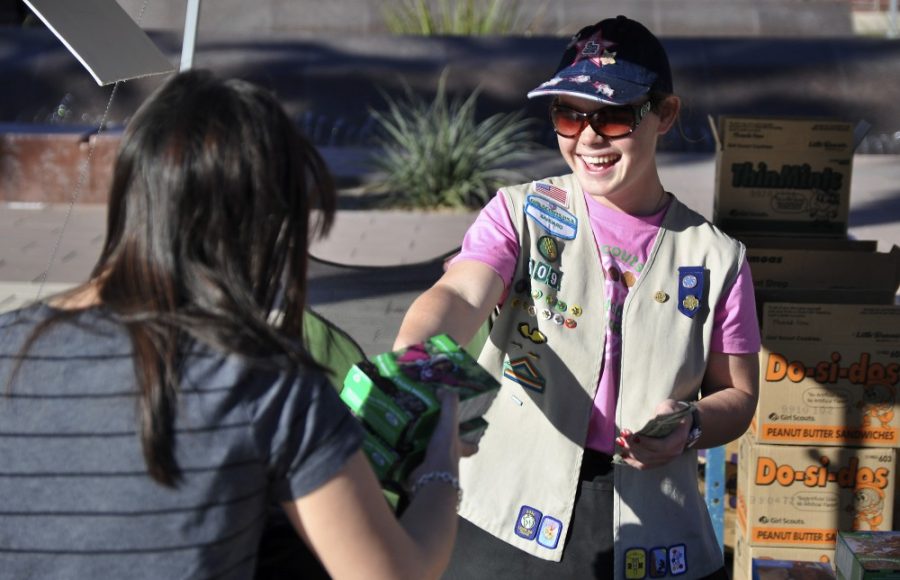The Girl Scouts have announced a new initiative that will pave the way for women nationwide as they pursue their leadership goals.
Led by UA alumna Anna Maria Chávez, Girl Scouts of the USA launched what it has called “the largest women’s advocacy cause campaign in the nation’s history dedicated to girls’ leadership” this week. The campaign, ToGetHerThere, seeks to reach balanced leadership in the U.S. within one generation.
“Balanced leadership” means “allowing everybody, irregardless of race, ethnicity, gender to have the opportunity, should they desire, to take leadership roles,” said Chávez, CEO of Girl Scouts of the USA. “This is not boys versus girls or men versus women, it is literally allowing the talent in this country to participate in leadership.”
Women make up only 3 percent of Fortune 500 CEOs and 17 percent of U.S. senators, representatives and governors, according to the Girl Scout Research Institute.
“Girls are looking across the landscape and not seeing role models that look like them,” Chávez said.
The problem isn’t that girls don’t aspire to be leaders, but that the ambition they have as children gradually diminishes as they grow older. When they are about 8 years old, girls’ desire to lead hits its peak, but around fourth grade, girls start to opt out of leading, and participating in male-dominated fields like math and science, according to the institute.
In order to reverse this trend, Girl Scouts hopes to create awareness surrounding the nation’s “leadership gap” and encourage adults to advocate for girls, Chávez said.
Providing younger girls with positive role models is one of the first steps to increasing their drive to lead, according to Laura Lelicoff, a senior studying accounting and entrepreneurship and the founder of Campus Girl Scouts at the UA. Seeing older women who have overcome gender stereotypes and have been successful in male-dominated fields shows them that “everything boys can do, girls can do too,” she said.
Campus Girl Scouts works with Girl Scouts of Southern Arizona, a local council that serves more than 14,000 girls in the region. One of the council’s priorities is encouraging scouts to engage in science, technology, engineering and mathematics fields, according to Audrey Bockerstette, membership experience specialist for the council and UA alumna.
“Everyone thinks it’s cookies, camp and crafts, and it’s definitely not. We’re trying to break that stereotype,” Bockerstette said.
Gender stereotyping is one of the largest obstacles women face as they try to assume leadership roles, according to Janae Phillips, a junior studying family studies and human development. Phillips is a member of the Arizona Blue Chip Program, a UA organization that teaches leadership skills. Outside of her academic life, she manages an online game development business.
“A lot of people are really shocked when I tell them what I do personally,” she said. In fact, Phillips said that when she conducts business via the Internet, her peers often assume she is male.
Phillips founded her business in 2008. When she began to seek funding for the company, many of her mentors directed her to grants designed specifically for female business owners.
“Up until that point, I had never really thought that much about my identity as a woman,” she said. “It was the first time I realized our struggle as women because people don’t often see women as leaders and small-business owners.”
Women tend to perceive leadership as uniting communities around the common good, whereas men tend to see it as an opportunity to possess authority, according to Chávez and the Girl Scout Research Institute. However, some argue it isn’t necessarily female leaders who have something special to bring to the table, but leaders in general.
“Not focusing on the gender would be the appropriate path to take if we want to move forward,” Phillips said. “In order for people to get to that point, we have to teach girls that they can be leaders and we have to teach others that girls can be leaders.”









